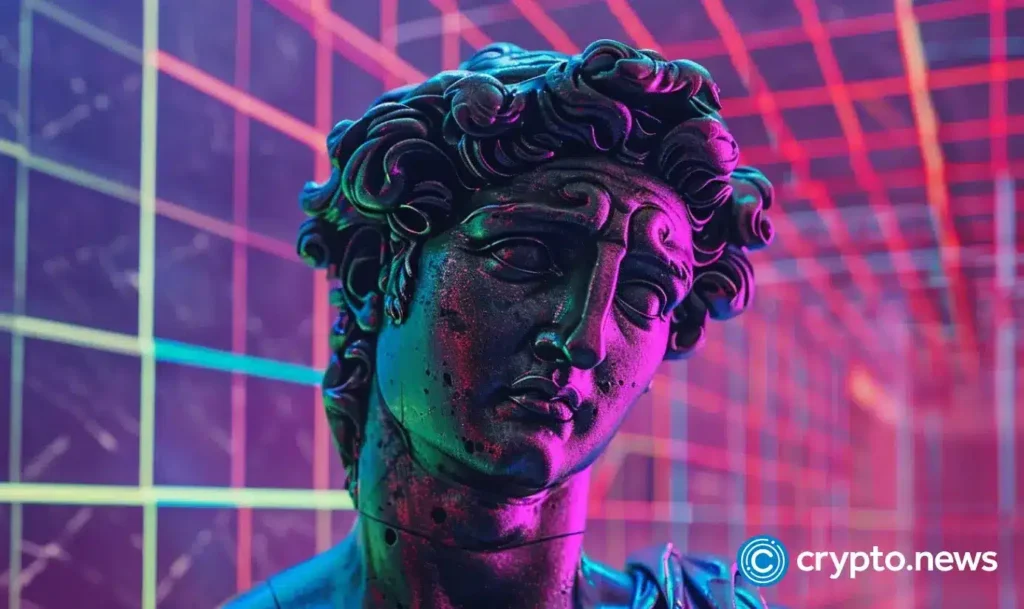Disclosure: The views and opinions expressed herein belong solely to the author and do not represent the views and opinions of crypto.news editorial.
In recent years, non-fungible tokens have sparked heated debate both in the art world and broader cultural debates. From their role in high-value digital art sales to their perceived association with speculative bubbles, NFTs are often viewed through a polarized lens.
Yet behind the buzz and controversy lies a transformative technology that is revolutionizing the way we preserve, authenticate and interact with art and culture. NFTs provide a tamper-proof ledger that ensures trust, transparency and preservation of cultural heritage, fundamental elements for understanding the true value of art.
Importance of authenticity and provenance
Authenticity is the cornerstone of valuing art. For example, a painting attributed to Leonardo da Vinci could fetch hundreds of millions of dollars, while the price of a copy by his contemporary could drop by more than 99%. However, a reproduction of the original would not be considered art in the same way today. This marked difference in value lies in the authenticity of the work.
Provenance, while perhaps less familiar to those outside the art world, is just as crucial. It refers to the documented history of a work of art, tracing its journey from its creation through different owners to its current status. When the provenance of an artwork includes renowned collectors or dealers, it confirms the authenticity of the artwork and adds historical context and significance, thereby enhancing its value.
Traditionally, authenticity and provenance have relied on physical documents such as catalogs, inventories or certificates, all of which are vulnerable to loss, damage or manipulation. These gaps in historical documentation can make it difficult to assess the true value of an artifact. NFTs provide a solution by creating immutable records, ensuring critical information is preserved and providing a transparent and secure way to track provenance.
Tokenization: a new path for art?
Despite the potential of NFTs for documentation and preservation, many traditional methods of publishing, digitization, archiving, and database management remain in place. Experts in the field of art and culture have not yet felt the need to integrate NFTs into these established practices.
However, the most common and tangible application of NFTs in the art world today is tokenization. This involves creating digital versions of artworks certified by respected institutions. For example, in 2021, the British Museum released more than 200 NFTs of 19th-century drawings by Japanese artist Hokusai, and the Belvedere Museum in Vienna turned Gustav Klimt’s The Kiss into 10,000 NFTs the following year.
Such initiatives offer the public an innovative way to engage with cultural treasures. Instead of purchasing a postcard or souvenir at the end of a museum visit, visitors can now purchase a piece of digital history that connects them to iconic works of art. This not only fosters deeper connections with cultural objects, but also helps fund the preservation and conservation of physical works of art through proceeds from the sale of these digital versions.
Private collectors have also embraced tokenization, often with investment goals in mind, offering fractional ownership of artworks via NFTs as digital proof of stock. However, this approach raises fundamental questions about the relationship between the physical work of art and its digital counterpart. For example, if you own an NFT share of a work of art, what rights does that confer? Can you display the artwork physically or digitally? When will the market infrastructure be mature enough to effectively support the trading of these digital stocks? Even in museum-led initiatives, how does the value and importance of an NFT compare to a high-resolution photo of the artwork available for free? These issues directly impact the perceived value and liquidity of these NFTs, whether they are treated as digital derivatives or as representations of tangible property.
Although tokenization offers many benefits in terms of education, engagement, and awareness, digital representations of art will likely remain secondary to their physical originals. In the long term, the true value of art lies in its physical presence, and preservation efforts must continue to focus on ensuring the material integrity of cultural objects. Museums, collectors and cultural institutions will still need to invest in protecting and curating these objects in controlled environments, using a range of technologies beyond NFTs.
NFT: the future of cultural preservation and reinterpretation
So, what is the best application of NFTs to preserve historical art and culture? Works of art are manifestations of human creativity and cultural identity, and their preservation can take two complementary paths. The first is to safeguard the physical objects created by those who came before us, ensuring that they remain intact and accessible to future generations. The other way is to capture the essence of these works, reinterpreting them in an innovative way, blending creativity and technology, thus bringing art and culture into the future.
NFTs offer a unique opportunity to bridge these two pathways. Not only do they document and digitize historical artifacts, but they also allow artists to reimagine cultural heritage in new forms. By leveraging technology, we ensure the stories of our past resonate with audiences of tomorrow.
An example of a meaningful and respectful use of NFTs for cultural preservation is Refik Anadol’s collaboration with the Yawanawá people of Brazil, consisting of a central video work and a collection of 1,000 unique and evolving NFT data paintings. dynamic way. The Winds of Yawanawá project combines artwork created by local people, data about the Amazon rainforest, AI technology, and immersive digital displays to create a data-driven art experience. This project not only celebrates indigenous heritage, but also raises awareness of the ecological importance of the Amazon, generating funds to support cultural and environmental conservation.
Such projects set a precedent for how NFTs can be used not only as static tokens of ownership, but also as dynamic platforms for storytelling, advocacy, and cultural preservation. By combining traditional art forms with environmental and technological data, NFTs can create immersive educational experiences that amplify Indigenous voices and promote cultural pride.
Embracing the future of art and culture
For now, contemporary artists are the main beneficiaries of NFT technology. NFTs can document provenance and verify authenticity from the moment of creation, giving future collectors confidence in the origins of the artwork. Additionally, NFTs can serve as a comprehensive digital archive, capturing details about sponsors, editions, exhibition history and transparent pricing.
We must remember that we are constantly creating history. The art of today will become the “ancient art” of tomorrow. Culture is a continuum and our relationship with time and its impact on art is inherently fluid. By adopting NFTs, we ensure that today’s artistic narratives will be preserved for future generations.
I believe it all starts in the mind. As humans, we generate ideas and transform them into physical objects, attaching meanings and interpretations to them. In today’s digital age, we increasingly value intangible assets such as digital experiences and virtual spaces. Rather than simply digitally replicating physical objects, we should continue to harness our creativity to create new forms and experiences that will define the future. This is how art and culture evolve, adapting to the times while retaining the essence of human expression.


